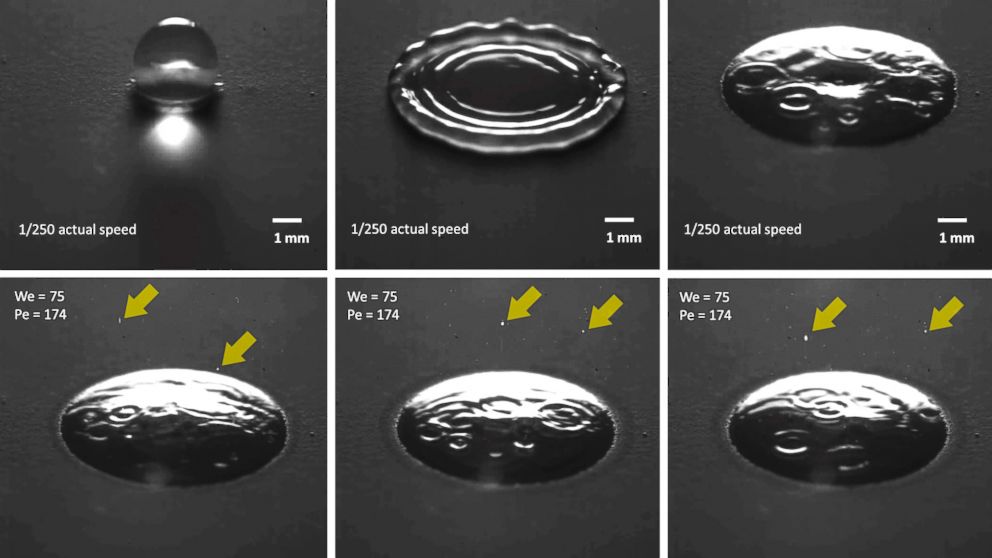Slow-Mo Video Uncovers Why It Smells Good After It Rains
But don't sing in the rain just yet. Those aerosols might also carry viruses.

— -- You know that earthy, musky aroma outside after a light rain?
Well, researchers at the Massachusetts Institute of Technology believe they've discovered the source of the wonderful smell. The refreshing fragrance apparently comes from tiny bubbles of scented air that fizz up like champagne when a raindrop hits a porous surface.
MIT scientists captured this mechanism for the first time in mesmerizing slow motion video. They used high-speed cameras in 600 experiments on 28 different surface types, MIT News reported.
When a raindrop hits a permeable surface, such as soil, tiny air bubbles are trapped at the point of contact. These bubbles, or aerosols, then burst upward, according to the video.
These aerosols carry aromatic elements from the natural environment, essentially dispersing the smell of the earth into the air, assistant professor Cullen Buie, one of the researchers, told ABC News.
New research also suggests that aerosols could also carry bacteria and viruses, Buie told ABC News. This could explain how diseases like E. coli might be transmitted to humans via rainfall and wind gusts, according to the video.
But no need to freak out just yet.
"99.99 percent of the bacteria in dirt doesn't actually cause disease," Buie told ABC News.
"Our research into this is only preliminary, so we can't say anything for sure yet," he added. "But if true, this means that we'll have to consider how pesticides, other diseases could be affecting a larger area than thought because of chemicals being carried by aerosols."
The team at MIT also found that more aerosols were released in light and moderate rain produced the most aerosols, while there were very few in heavy rain, Buie told ABC News.
Australian scientists first studied and characterized this phenomenon using the word "petrichor," which now means a smell that frequently accompanies the first rain after a period of warm, dry weather.
But the Australian scientists didn't discuss the mechanism for how this earthy scent gets into the air, Buie told ABC News.
"One hypothesis we have is that that smell comes from this mechanism we've discovered,” he said.
The results of the experiments this week were published in the journal Nature Communications.
One thing to be careful of is not to confuse the smell after rain with the smell before a thunderstorm.
"Before a thunderstorm, there’s lightning, and that leads to the creation of ozone before a thunderstorm approaches," Buie told ABC News. "What we’re talking about is totally different."



